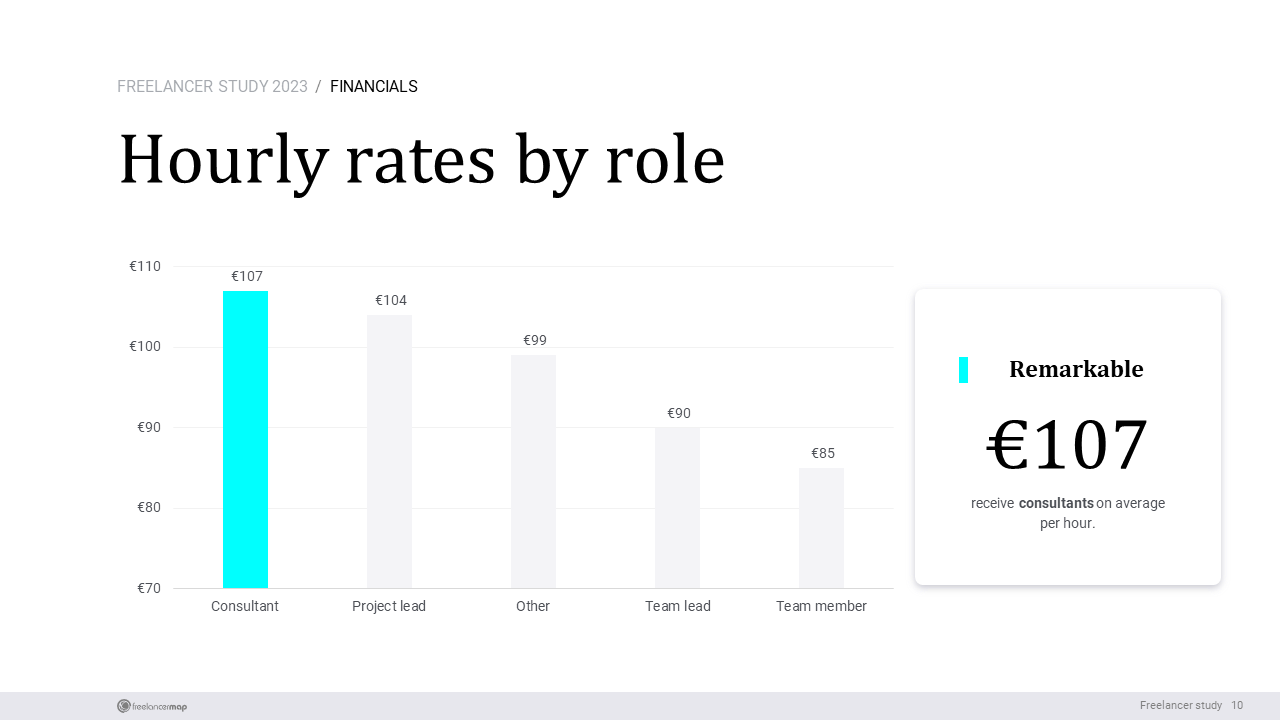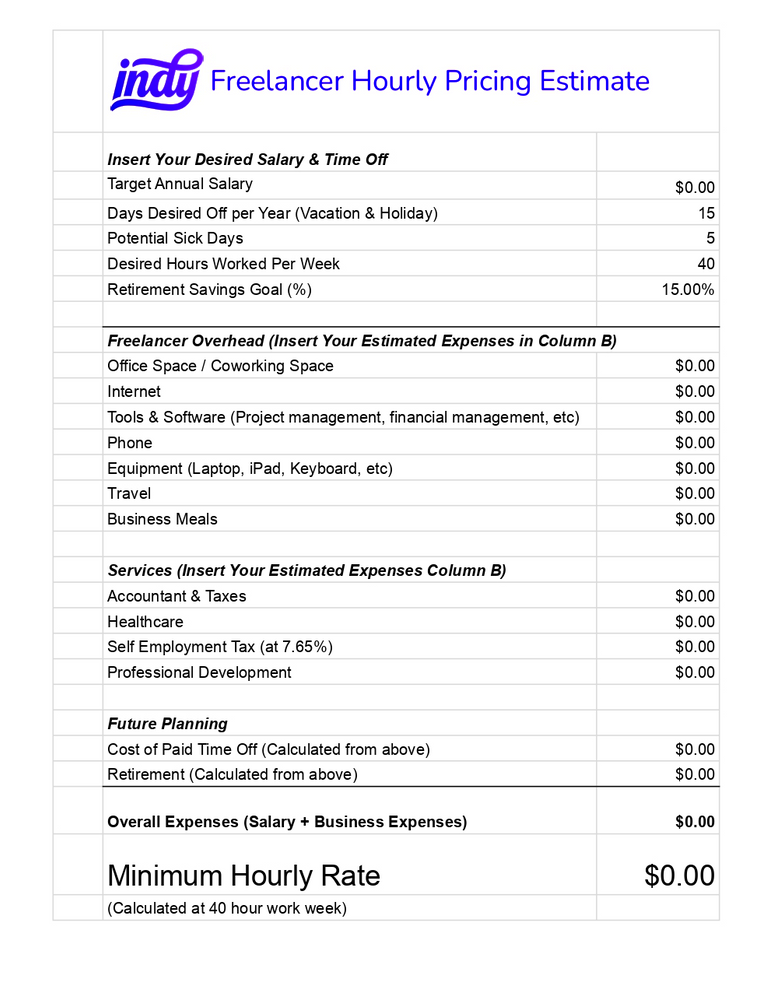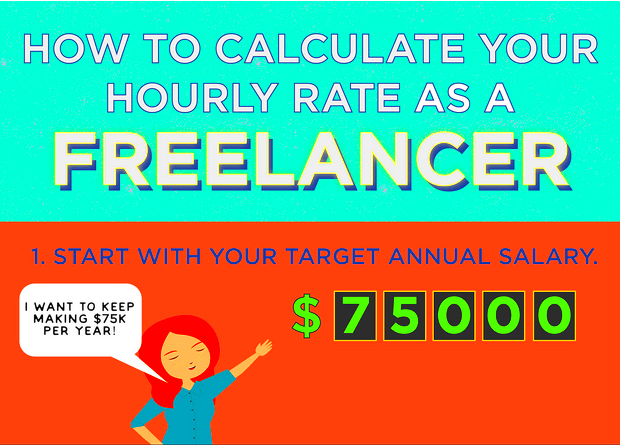As a freelancer, one of the key decisions you'll make is setting your hourly rate. This rate can vary depending on a number of factors, and getting it right is crucial for maintaining a sustainable income. In this post, we'll dive into how hourly rates are determined, the factors that affect them, and tips on how to set a competitive rate. Whether you're new to freelancing or looking to adjust your rates, understanding the ins and outs of hourly pricing can help you find the right balance between fair compensation and attracting clients.
Understanding How Hourly Rates Are Determined

Your hourly rate is not just a random number. It is influenced by a mix of factors that reflect your skill, experience, industry demand, and even your geographic location. Here are some key points to understand when determining your hourly rate:
- Experience and Expertise: The more experienced and skilled you are, the higher your rate can be. As you gain more knowledge and success in your niche, your rate should reflect that expertise.
- Industry Standards: Different industries have different standards for hourly rates. It's important to research what other freelancers in your field charge to stay competitive.
- Client Type: Your hourly rate may vary depending on the type of client you’re working with, such as startups, established businesses, or non-profits.
- Geographic Location: Freelancers in different parts of the world can charge different rates due to varying costs of living and market demand.
Ultimately, your hourly rate should reflect the value you provide and be sustainable for both you and your clients. It’s a balance of offering a competitive price while ensuring you’re fairly compensated for your work.
Also Read This: How to Become a Professional Listener on Fiverr
Factors Influencing Freelance Hourly Rates

Several factors play a role in determining the hourly rates you can charge as a freelancer. Here are some key elements to consider:
- Skill Level: A highly skilled freelancer can charge more than someone just starting out. Specialized skills, such as coding or graphic design, often come at a premium.
- Experience: Your past work and experience in the field can influence your rates. Freelancers with a solid portfolio and proven success in similar projects can justify higher rates.
- Market Demand: High-demand fields, like web development, often allow freelancers to charge more because clients are willing to pay for those in-demand services.
- Client Budget: The type of clients you work with will impact your hourly rate. Larger corporations or high-end clients often have bigger budgets compared to smaller businesses or startups.
- Location: Freelancers living in high-cost cities or countries tend to charge more, while those in areas with lower costs of living may adjust their rates accordingly.
- Project Complexity: The more complex the project, the higher your hourly rate should be. For example, a project that requires specialized knowledge or takes longer to complete may demand a higher rate.
- Reputation and Brand: If you've built a strong reputation and brand, you may be able to charge a premium rate. Positive client testimonials and repeat business help justify higher prices.
Understanding these factors allows you to make informed decisions about your hourly rate. Regularly assessing these elements will help you adjust your rate to remain competitive and ensure you’re earning what you’re worth.
Also Read This: How to Make a Fiverr Gig Image: A Step-by-Step Guide
How to Set Your Hourly Rate as a Freelancer

Setting your hourly rate as a freelancer can feel tricky, but it's an important step in ensuring that your work is properly valued. To help you determine a fair rate, you'll need to take a few factors into account. The goal is to find a balance between what clients are willing to pay and what you need to earn. Here's a simple process to set your hourly rate:
- Know Your Costs: First, calculate your living expenses and business costs. This includes everything from rent to software subscriptions. Your hourly rate needs to cover these costs while still allowing you to make a profit.
- Assess Your Skills: Consider your experience and the value you offer to clients. Highly skilled freelancers with specialized knowledge can command higher rates than those who are just starting out.
- Research Industry Standards: Research what others in your niche and industry are charging. Websites like Fiverr, Upwork, and other freelancing platforms provide a good benchmark for comparison.
- Factor in Time: Consider how long it takes you to complete different types of projects. For example, if a project is going to take longer than expected, it might be worth raising your hourly rate for that type of work.
- Adjust as Needed: Don’t be afraid to revisit and adjust your rates over time. As you gain more experience, build your portfolio, or see changes in market demand, it’s okay to increase your rates to reflect your growth.
Remember, setting your hourly rate is not a one-time task. It should evolve as you progress in your freelance career. Keep track of what works for you and be open to adjusting when necessary.
Also Read This: Should Orders Show Up Right Away on Fiverr?
Comparison of Hourly Rates Across Different Freelance Categories
Freelance rates vary greatly depending on the industry and type of work you're doing. Understanding how rates differ across categories can help you set a competitive yet fair price for your services. Here’s a comparison of hourly rates for some common freelance categories:
| Freelance Category | Average Hourly Rate |
|---|---|
| Web Development | $50 - $150 |
| Graphic Design | $30 - $80 |
| Content Writing | $20 - $60 |
| Social Media Management | $25 - $75 |
| Virtual Assistance | $15 - $50 |
| Video Editing | $40 - $100 |
These ranges are just a general guideline, and rates can vary based on experience, location, and market demand. Keep in mind that highly specialized fields, such as SEO experts or software developers, may command rates on the higher end of the spectrum. If you're working in a niche field, you may be able to charge more based on the demand for your expertise.
It’s essential to stay up-to-date with what your competitors are charging and adjust your rates accordingly to stay competitive in the market.
Also Read This: How to Write an Effective Fiverr Profile Description
How Hourly Rates Affect Fiverr Gig Performance
Your hourly rate can directly impact how your Fiverr gig performs. Fiverr is a competitive marketplace, and setting the right rate is crucial for standing out and attracting clients. Here’s how your hourly rate plays a role in your Fiverr success:
- Client Perception: Setting your rate too low might attract clients who expect poor quality or unrealistic timelines, while setting it too high could scare off potential buyers. Finding a middle ground is key to showing your value while remaining competitive.
- Gig Ranking: Fiverr’s algorithm considers many factors, including pricing, when determining gig rankings. If your rate is too high for the average market, it could hurt your gig’s visibility. Conversely, if your rate is too low, it might signal that you lack experience, which could also affect your gig's performance.
- Quality of Clients: A reasonable rate will attract clients who are willing to pay for quality. Lower rates may attract clients looking for bargain services, leading to more transactional and less rewarding relationships.
- Competitive Edge: On Fiverr, there are often many freelancers offering similar services. Your hourly rate can be one of the deciding factors for clients comparing your gig with others. Being strategic with your pricing can help you stand out from the crowd.
Adjusting your hourly rate based on feedback and results is essential for continued success on Fiverr. Start by setting a fair rate, then use the performance of your gigs to inform any future adjustments. Balance your pricing with quality, delivery time, and customer satisfaction to optimize your gig’s visibility and attract more clients.
Also Read This: Understanding Fiverr Revisions: What You Need to Know
Common Mistakes to Avoid When Setting Your Hourly Rate
Setting your hourly rate as a freelancer isn't just about choosing a number. There are common mistakes many freelancers make when pricing their services, and avoiding them will help you maintain a profitable and sustainable business. Here are some mistakes to watch out for:
- Undervaluing Your Skills: One of the biggest mistakes is setting your rate too low because you’re unsure of your value. Charging less may seem like a way to attract clients, but it can lead to burnout and undervaluation of your skills. Remember, your time and expertise are worth something.
- Ignoring Your Expenses: Failing to account for business costs, taxes, and other expenses can result in rates that aren’t sustainable. Always factor in what you need to earn to cover your overhead costs and personal expenses.
- Overpricing Without Proof of Value: On the other side, setting a rate too high without a strong portfolio or reputation can scare away potential clients. It's important to build credibility before charging premium rates.
- Not Adjusting for Experience: Many freelancers forget to regularly adjust their rates as they gain more experience. As you complete more projects and gain valuable skills, your rate should rise accordingly.
- Neglecting Market Research: A common mistake is not researching what others in your field are charging. While you shouldn’t copy others, understanding market trends helps ensure your rates are competitive and fair.
Avoiding these mistakes will help you set a fair, sustainable rate that attracts quality clients and ensures you’re compensated for your hard work. Regularly reassess your pricing as your skills and the market evolve.
Also Read This: How to Contact Someone on Fiverr: A Step-by-Step Guide
FAQ
When setting your hourly rate, many questions may come to mind. Here are some frequently asked questions to help guide you:
- How do I know if my rate is too high or too low? You can gauge this by looking at the rates of other freelancers in your field, considering your skill level and experience, and testing different pricing strategies. If clients are turning down your services, your rate might be too high. If you’re struggling to meet your expenses, it may be too low.
- Should I charge differently for different types of clients? Yes, it’s okay to adjust your rates based on the client’s budget or the complexity of the project. For larger companies or complex projects, you can charge a higher rate, while smaller clients or less demanding projects might warrant a lower rate.
- Can I change my hourly rate over time? Absolutely. As you gain more experience and build your portfolio, it’s important to adjust your rates to reflect the value you provide. Be transparent with clients if you need to raise your rates and provide a good reason for the change.
- Should I offer discounts? Offering discounts occasionally can help attract clients, but it shouldn’t be your default pricing strategy. Make sure any discount is temporary and doesn’t undermine the value of your work.
- How do I know if my rates are competitive? Research what other freelancers in your field are charging, particularly those with similar skills and experience. Websites like Fiverr, Upwork, and LinkedIn can help you understand the market better.
Conclusion
Setting your hourly rate as a freelancer is one of the most important decisions you'll make. It's essential to find a rate that reflects your skills, experience, and the value you provide, while also staying competitive in the marketplace. Avoid common mistakes like undervaluing your work or ignoring your business expenses, and don't be afraid to adjust your rates as you grow in your career.
Remember, your hourly rate isn’t just about getting paid—it’s a reflection of your professional worth. Stay informed about industry standards, evaluate your skills, and be open to revising your pricing strategy as you gain more experience. By doing this, you’ll build a sustainable and rewarding freelance business.




